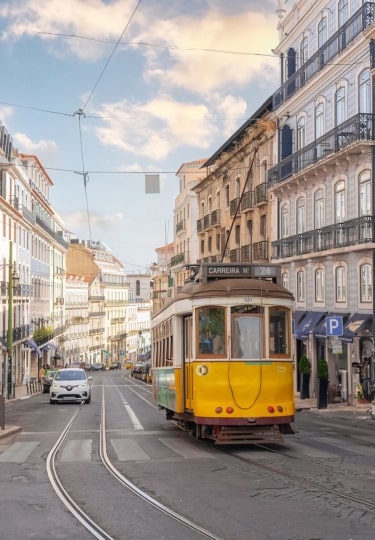Many of the best things to do in Lisbon involve exploring the city’s seven hills. Riding a vintage tram to astonishing viewpoints, for example, and marveling at a medieval castle high above. Or meandering up steep staircases festooned with street art. And all fueled by a few pastéis de nata custard tarts, of course.
Not that a visit to one of Europe’s oldest cities should focus solely on monuments and landmarks. From watching soulful fado concerts and browsing the world’s oldest operating bookstore to sipping local cherry liqueurs and lounging on sizzling shorelines, Portugal’s capital city has plenty of unforgettable experiences.
Whether you’re keen to admire azulejos, taste Portugal’s signature seafood dishes, or want to be wowed by a UNESCO-listed monastery, these are the top things to do in Lisbon.
Climb to the Castle

Castelo de São Jorge
Crowning Lisbon’s highest hill, Castelo de São Jorge is the city’s loftiest viewpoint and most storied sight. Constructed in the 11th century and heavily restored in the mid-1900s, the vast defensive complex occupies the site of a former sixth-century fortress.
While the ascent to reach the castle is a little arduous, these layers of Lisbon’s history make the climb worthwhile.
Inside the European castle, you’ll be treated to far-reaching views of the city’s russet rooftops, neighboring hills, and the sparkling Tagus River, either while walking the walls or climbing higher still to the Tower of Ulysses.
Once your camera is suitably overworked, there’s plenty more to explore, including weathered cannons, a small museum detailing the castle’s history, and even meeting the free-roaming peacocks that live here.
See the Sky in a Convent
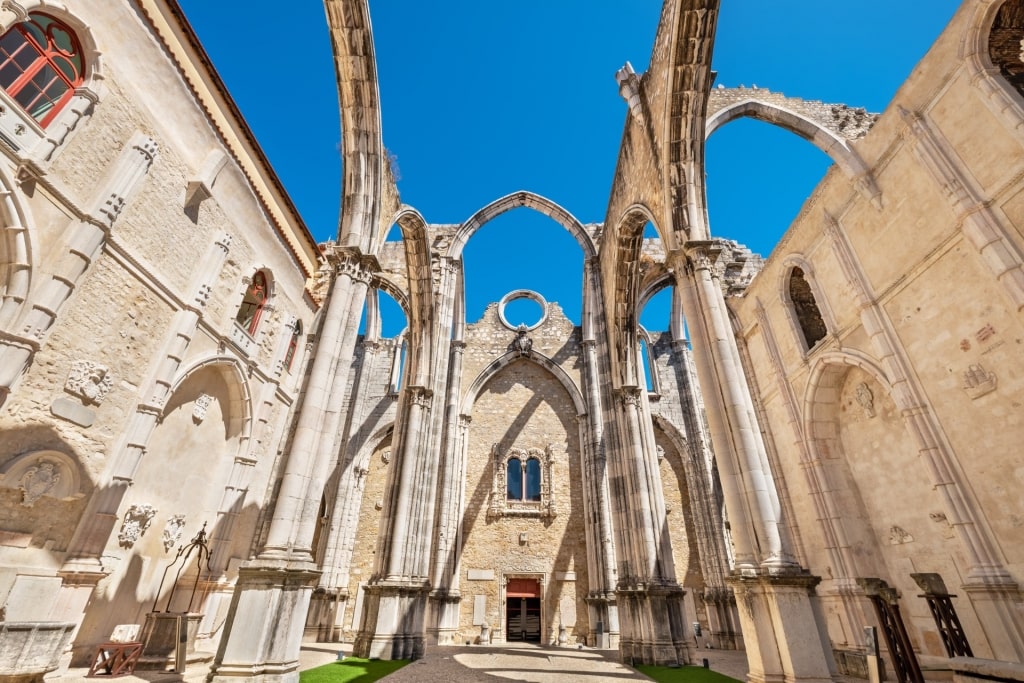
Convento do Carmo
On November 11, 1755, Lisbon was forever changed when a devastating earthquake, followed by fires and a tsunami, destroyed swathes of the city, leaving a trail of destruction in its wake.
While many of Lisbon’s heritage sites were reconstructed in the following decades, hundreds of historical buildings were lost forever. However, one impressive landmark in the capital was purposefully left with the scars of that never-to-be-forgotten day: Convento do Carmo.

Convento do Carmo
One of the best things to do in Lisbon to understand the magnitude of the devastation is to enter the now open-to-the-skies nave of this Gothic convent. While the walls have been reinforced and some study arches still stand, it’s a unique experience to stand below the azure sky and imagine that fateful day.
Fittingly, the convent is now the headquarters of the Portuguese Archaeologists’ Association. In the back rooms of the former church, now a small museum displaying important artifacts found post-earthquake, you can watch a short video about the convent’s history and restoration.
Experience an “Earthquake”
While standing amongst the earthquake’s damage is one way to understand the destruction, another is to “live it” at Quake, one of Lisbon’s newest attractions.
Fully interactive, the Quake tour will take you on an immersive seismic experience inside a reconstructed set of long-gone Lisbon. Walk through medieval and earthquake-ravaged streets, learn more about tremors in general, and then step inside the earthquake simulator to better understand the harrowing reality of what the city’s residents faced in 1755.
Get Lost in Lisbon’s Oldest Quarters
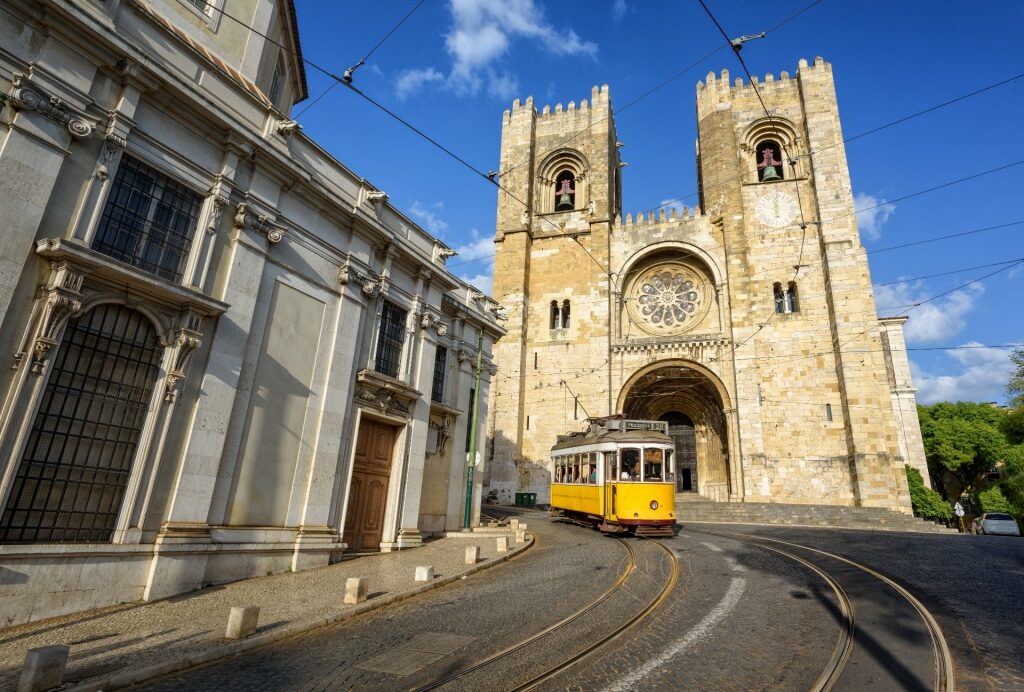
Alfama
Slender streets of pastel-hued homes, steep cobbled staircases, and windows framed by fluttering laundry define the Mouraria and Alfama neighborhoods. These are Lisbon’s two oldest districts, which, for the most part, survived the worst of the earthquake.
Getting lost amongst this labyrinth of narrow lanes and occasional medieval home is arguably the best thing to do in Lisbon to peer into the city’s past and see and hear its traditions. Locals linger outside doorways, melancholic fado music sets a soundtrack, and the scent of sardines often wafts in the breeze.
However, due to Alfama’s appeal, it’s started to shift from a time capsule to a tourism hotspot in recent years. Exploring neighboring Mouraria, the former Moorish Quarter can provide a slightly less redeveloped version of old-world Lisbon with fewer crowds.
Sample Grilled Sardines

Grilled sardines
Venture to Alfama in mid-June when the spirited Santos Populares Festival is in full swing, and you’ll struggle to avoid outside grills laden with sardines. This simply prepared fish is a celebratory staple, though enjoying a plate is a popular Lisbon pastime no matter the month.
Still, the best season to enjoy freshly caught grilled sardines in unfussy Alfama restaurants, such as O Cartaxeiro or the obviously-named Sardinha, is May until August. Even out-of-season sardines are still on the table, often served as conservas, Portugal’s equally esteemed tinned offerings.
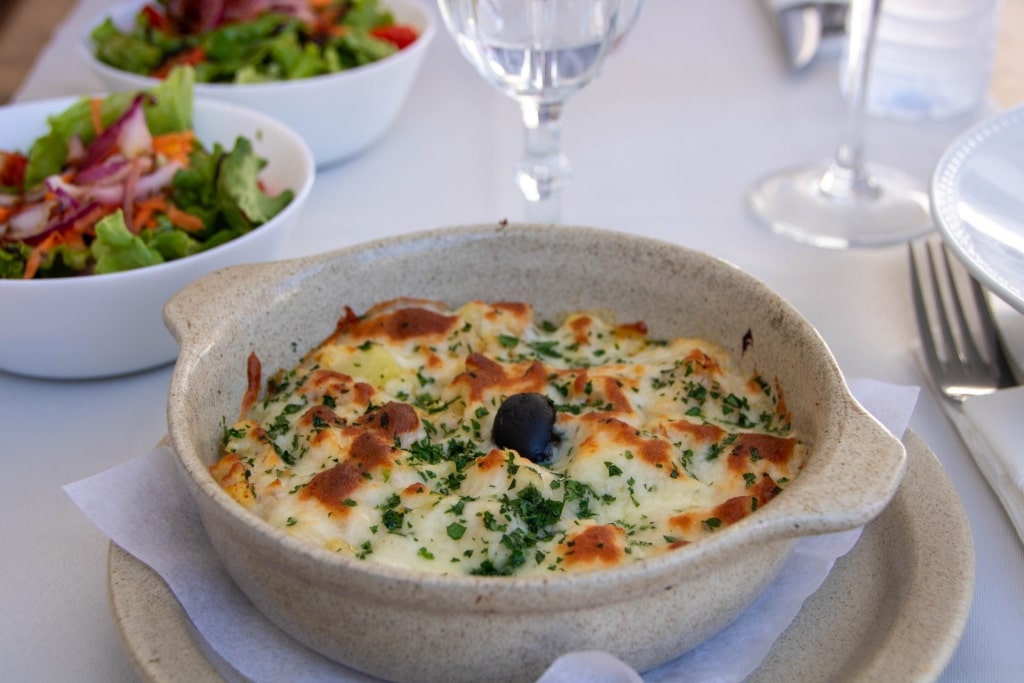
Bachalau
Not a fan of the humble sardine? There is no shortage of other seafood dishes in Lisbon. Bachalau, salted codfish, appears on every menu—although it’s actually sourced from Norway.
For more local flavors, order amêijoas à bulhão pato, a simple clam dish steamed with oil, garlic and cilantro, or enjoy a full seafood spread courtesy of the Atlantic Ocean at long-established Cervejaria Ramiro.
See Sé
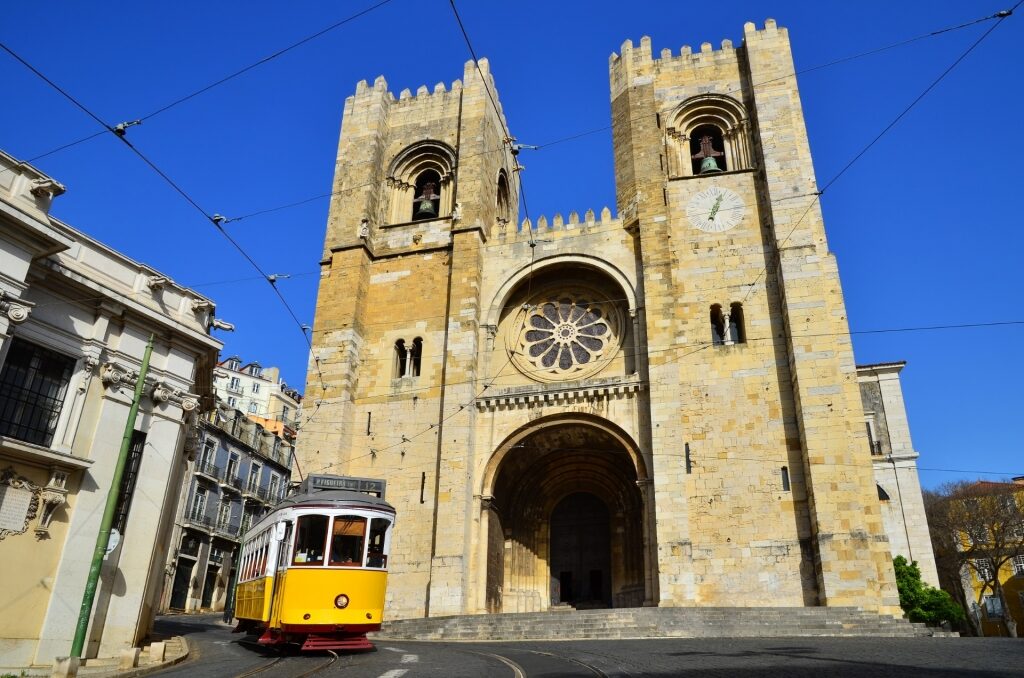
Lisbon Cathedral
One of Alfama’s must-visit sights is Sé, Lisbon’s Cathedral and the city’s oldest church, dating from the 12th century. Fronted by two bell towers and a rose window, the exterior is relatively simple, which gives a misleading impression of what waits beyond.
Cross the threshold into the dimly lit nave, though, and you’ll discover a fascinating medley of architectural styles and archeological finds. In fact, the best part of Sé isn’t even the main church hall—it’s found in the ticketed cloisters where excavations continue.
Here, you can witness Lisbon’s Roman and Islamic layers in the ongoing archeological digs before continuing to the treasury, where some of the most important discoveries are on display.
Ride a Vintage Tram or Funicular
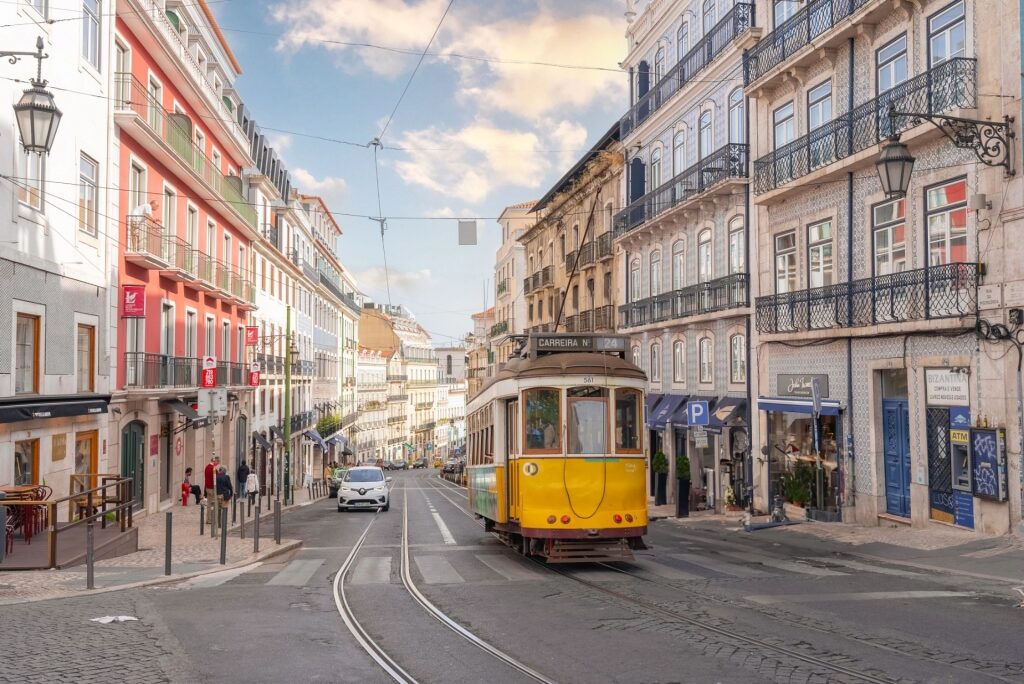
Tram in Lisbon
Much of Lisbon’s charisma can be credited to its sunflower-yellow trams and funiculars, which still form part of the city’s public transport network. While more modern trams now ply certain routes, the best ones to board are the original, wooden-seated, wide-windowed, retro carriages.
Tram 28 is the best known, meandering between many of the city’s most famous sights as it trundles up and down the hills’ contours. Joining at the start (Martim Moniz) or end (Largo do Prazer) of the line will make getting a seat on this ever-popular route easier. If you’d prefer a little less jostling onboard, opt for one of the dedicated red tourism trams instead.
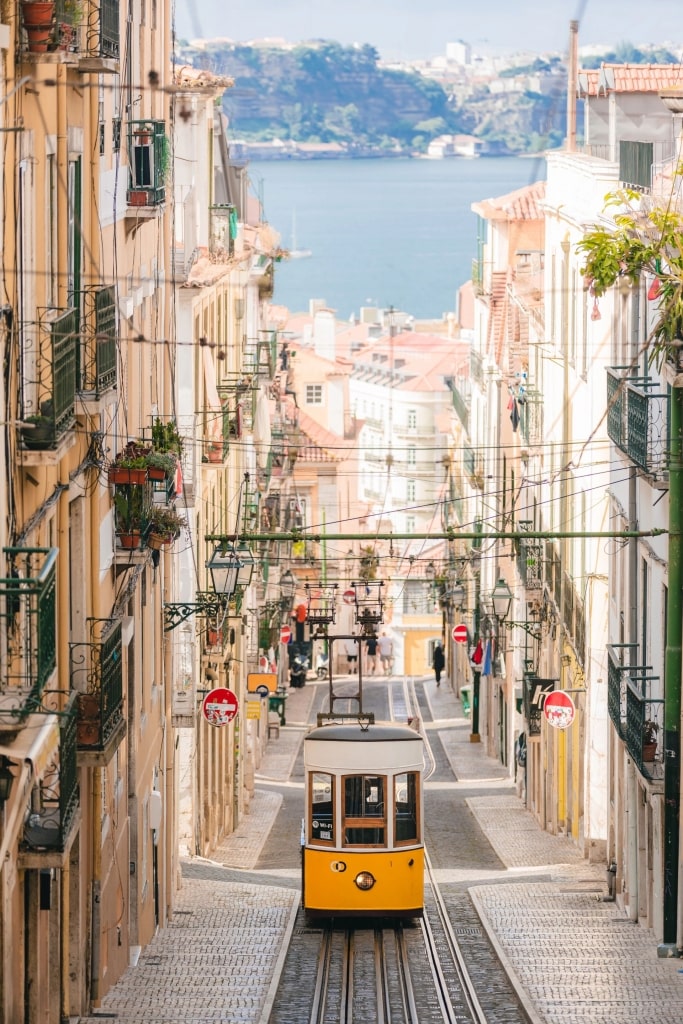
Elevador da Bica
Equally enchanting are the funiculars, which slowly clamber up the steep hills. The camera-friendly, 19th-century Elevador da Bica is most recognized, squeezing through candy-colored homes as it ascends to the Barrio Alto district.
Not that all of Lisbon’s hill-climbing transport remains weathered. In March 2024, the Graça funicular reopened, and a ride up this modern lift will carry you to one of the city’s best viewpoints, Miradouro da Graça.
Meander Between Miradouros
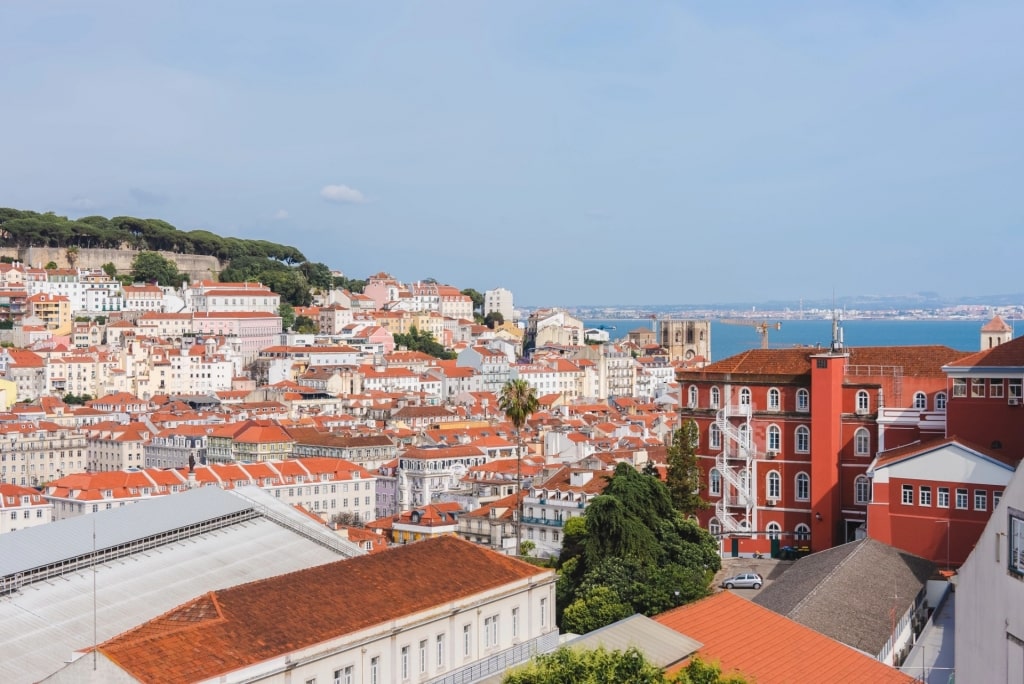
Lisbon
Climbing Lisbon’s hills can be tiring in the midday heat, but it’s always rewarded. Lookout points, locally known as miradouros, appear on seemingly every elevated corner, offering dreamy panoramas of terracotta rooftops, whitewashed laneways, and the glittering Tagus River.

View from Miradouro de São Pedro de Alcântara
One of the top things to do in Lisbon when the sun starts to set is to head to Miradouro da Senhora do Monte, which boasts views that would make even Castelo de São Jorge blush. If you’d prefer to have the castle firmly in your sight, settle around the fountain at Miradouro de São Pedro de Alcântara instead.
Other outlandish spots to survey the city include Miradouro de Santa Luzia, which peers over Alfama towards the river, and Miradouro de Santa Catarina, with panoramas of the Ponte 25 de Abril Bridge.
Spot the Golden Gate Bridge’s Doppelganger
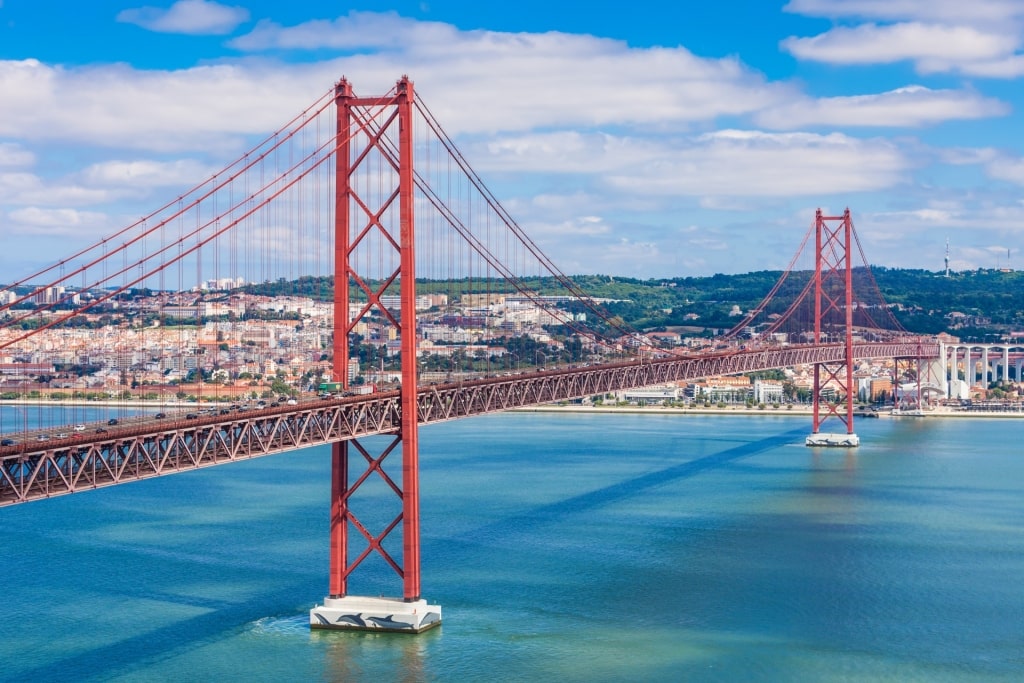
Ponte 25 de Abril
Suspended above the Tagus River and linking Lisbon with Almada, the Ponte 25 de Abril is one of the most beautiful places in Portugal. It has been a Lisbon landmark since its inauguration in 1966.
Nearly identical in appearance to San Francisco’s Golden Gate Bridge, it’s easy to mistake these two doppelgangers. The bridge does, however, share an architect with the San Francisco-Oakland Bay Bridge, rather than the Golden Gate.
The bridge is closed to foot passengers—it has its own set of rules in Portugal’s highway code—so it’s impossible to walk across.
However, if you’d like a closer look at this engineering marvel, the Pilar 7 Experience allows access to the deck alongside the bridge. In the halls below, a small museum covers the engineering ingenuity of the bridge’s construction.
Admire Azulejos

Museu Nacional do Azulejo Photo by Matt Kieffer on Wikimedia Commons, licensed under CC BY-SA 2.0
Azulejos, Portuguese signature ceramic tiles, are perhaps Portugal’s most treasured artistic creations, adding character and color to the facades of everything from humble homes to famous monuments.
A visit to the Museu Nacional do Azulejo, set inside an extensive 16th-century convent, is one of the best things to do in Lisbon to understand how influential this decorative style has been throughout the ages.
As you stroll between cloisters, hallways, and an incredulously gilded church, tiled scenes, some 700 years old, decorate the walls in all directions. The Grande Panorama de Lisboa, a Baroque-era, 75-foot-long blue-and-white representation of pre-earthquake Lisbon, is particularly impressive.

Mosteiro de São Vicente de Fora
Still, no museum visit is needed to appreciate azulejos; these signature tiles are ubiquitous. From the traditional blue and white walls in Mosteiro de São Vicente de Fora to the kaleidoscopic and flowery facade of Viúva Lamego in Anjos, you’ll stumble upon colorful patterns across the city.
Read: Lisbon vs. Porto: Which Should You Visit?
Fall for Fado

Fado
The first time you hear fado, it can feel overwhelming. This soulful, mournful, and reflective genre performed by Portuguese acoustic guitars and emotion-inducing singers is as captivating as it is haunting.
Performed in bars, taverns, back rooms, and open courtyards across the city, but especially prevalent in the Alfama and Mouraria districts, believed to be where the genre originated, no other type of music comes close to capturing Lisbon’s soul.

Fado
Even with the nuance of the lyrics sometimes being lost in translation, it’s easy to understand these melodies are usually songs of longing, best summarized by the equally hard-to-define Portuguese word saudade.
Being swept away into a land of emotions at a fado performance is one of the top things to do in Lisbon, whether you opt for a classical, laid-back bar or a more impressive setting.
The Real Fado company is best for the latter, hosting intimate shows in unique venues, such as the Riad-like EmbaiXada shopping center or underground in Museu da Água’s old water reservoirs.
Hear Fado’s Legacy
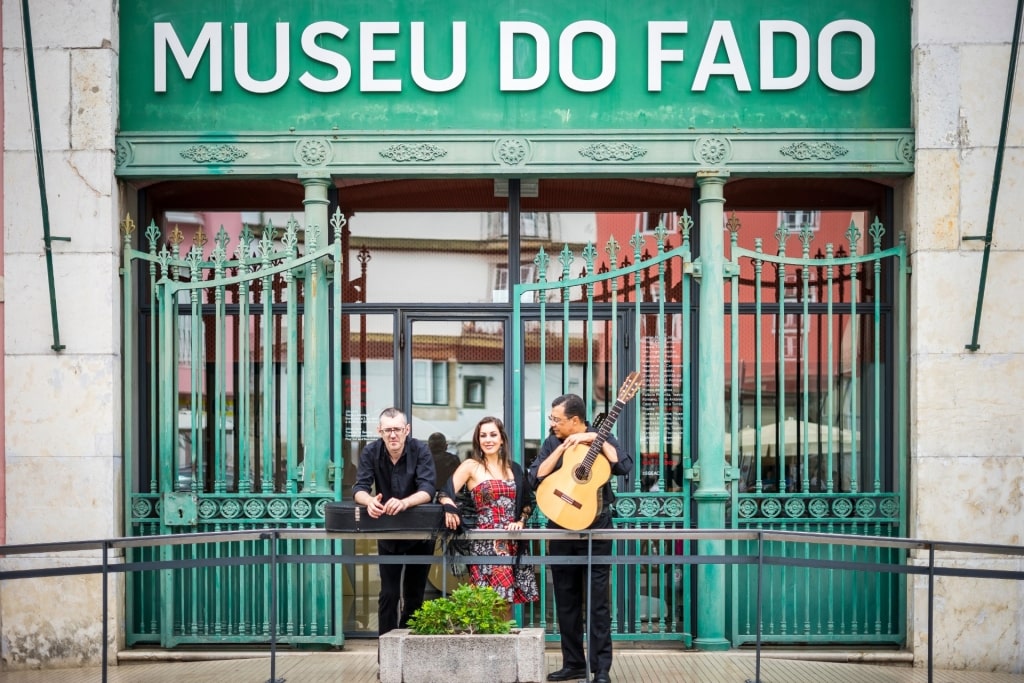
Fado Museum
Before attending a Fado concert, a little background knowledge can go a long way in understanding the lyrics’ sentiments, often rooted in struggles or recounting narratives related to society, economics, love, and loss.
To learn more, visit Alfama’s Fado Museum. This compact but informative space will guide you through the genre’s evolution since the 1800s and introduce you to some of the most famous fado performers in Portugal.
The most acclaimed is, by far, Amália Rodrigues, known as the “Rainha do Fado” (Queen of Fado). Her former home, now the Casa-Museu Amália Rodrigues, offers a guided tour explaining the performer’s legacy.
Stroll Around the Belém District

Belém District
One of Lisbon’s finest walks tracks the Tagus River downstream towards the Belém district. Ambling along the riverbank, you’ll see all of Lisbon’s faces: the warehouse-like LX Factory with its trendy boutiques and fusion restaurants, the curved, contemporary rooftop of the MAAT museum, and the decommissioned Tejo Power Station.
But beyond these industrial sights, Belém itself is a much grander affair. A neighborhood of opulent buildings, manicured gardens, and former monarchical palaces, the district’s elevated status was cemented during the empire-establishing years. Even today, Belém National Palace is still the official residence of the Portuguese President.

Torre de Belém
You could easily spend a day exploring everything the neighborhood has to offer. The UNESCO-listed Torre de Belém, in particular, is one of the best places to visit in Portugal.
This highly detailed and crenelated sea defense is a reminder of Portugal’s maritime past, as is the Padrão dos Descobrimentos, a towering monument adorned with seafaring historical sculptures dedicated to the “Age of Discovery”. Ride the lift to the top to fully appreciate the 164-foot-wide map and compass tile work decorating the promenade below.
Belém is also one of Lisbon’s most cultured districts, with plenty of museums. Two of the most impressive are the Museu de Arte Popular, dedicated to traditional crafts, and the Museu Nacional dos Coches, which displays a century-spanning collection of regal carriages.

Maritime Museum
Even mighty Jerónimos Monastery hosts exhibitions, with the central section hosting the National Archaeology Museum and Lisbon’s Maritime Museum occupying the westerly chambers.
Read: Best Time to Visit Lisbon
Marvel at a UNESCO-listed Monastery

Jerónimos Monastery
Magnificent from all angles, the Jerónimos Monastery is Belém’s crowning jewel and one of Lisbon’s most impressive architectural feats. It’s also one of the city’s oldest and most extravagant buildings, having escaped the 1755 earthquake relatively unscathed.
Construction of the monastery began in the early 16th century and continued for nearly 100 years, primarily using the Manueline style, a late Gothic architectural style named after the Portuguese King, Dom Manuel I.
Wandering among the beautifully embellished cloisters and imposing hallways with their ornate arches is one of the best things to do in Lisbon to see the Manueline style. Yet it’s stepping inside the soaring church hall that will likely leave you speechless as your eyes climb the motif-carved columns to the outstanding ribbed and vaulted ceiling.
Taste Portugal’s Most Famous Pastry

Pastéis de Belém
No visit to Portugal would be complete without indulging in a pastel de nata, Portugal’s mouthwatering contribution to the sweet-toothed culinary world. These eggy custard tarts wrapped in a crisp, flaky pastry are best enjoyed warm, especially with a sprinkling of cinnamon.
Pastéis de Belém, moments from Jerónimos Monastery, where the recipe was created, is one of the finest places to try these custard tarts that Portugal is famous for.
Skip the long lines for take-out and settle at a table in one of the cavernous, blue-tiled rooms instead. The bakery produces around 20,000 of the tarts every day, so you can be sure of a fresh-from-the-oven pastel.
Even if you don’t venture to Belém, you’ll have no problem finding these signature sweets in nearly every cafe across the city. Some other pastelarias (pastry shops) held in high esteem include the various branches of Manteigaria and historic Confeitaria Nacional in Rossio.
Ride Lisbon’s Lift
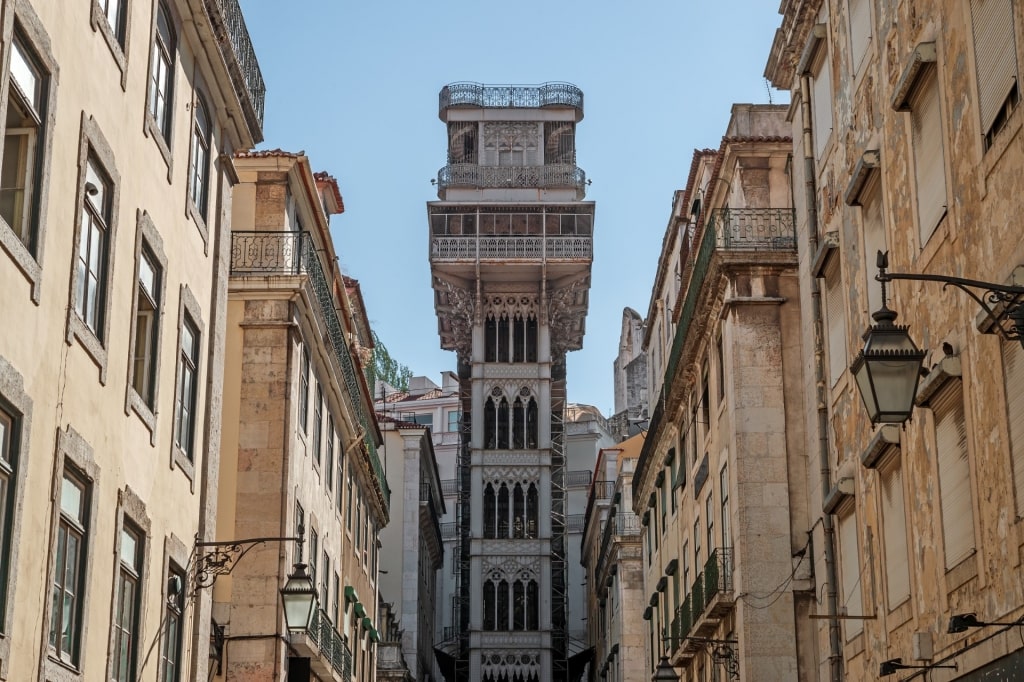
Santa Justa Lift
Linking Baixa (low) Lisbon to the elevated Chiado neighborhood, the Santa Justa Lift has been helping lisboetas avoid the schlep up the hill since 1902. While it’s no longer steam-powered and rarely used by locals these days, it’s a slice of Lisbon’s industrial history worth experiencing.
Designed by Raoul Mesnier du Ponsard, a student of Gustave Eiffel (of Eiffel Tower fame), the very brief ride is one of the best things to do in Lisbon, both to avoid the climb and appreciate the cabin’s wood-paneled, retro decor.
Even if you don’t ascend via the elevator, the caged viewing platform at the top station is open to all, and taking the elevator down rather than up often means no waiting in line.
Shop in Chiado
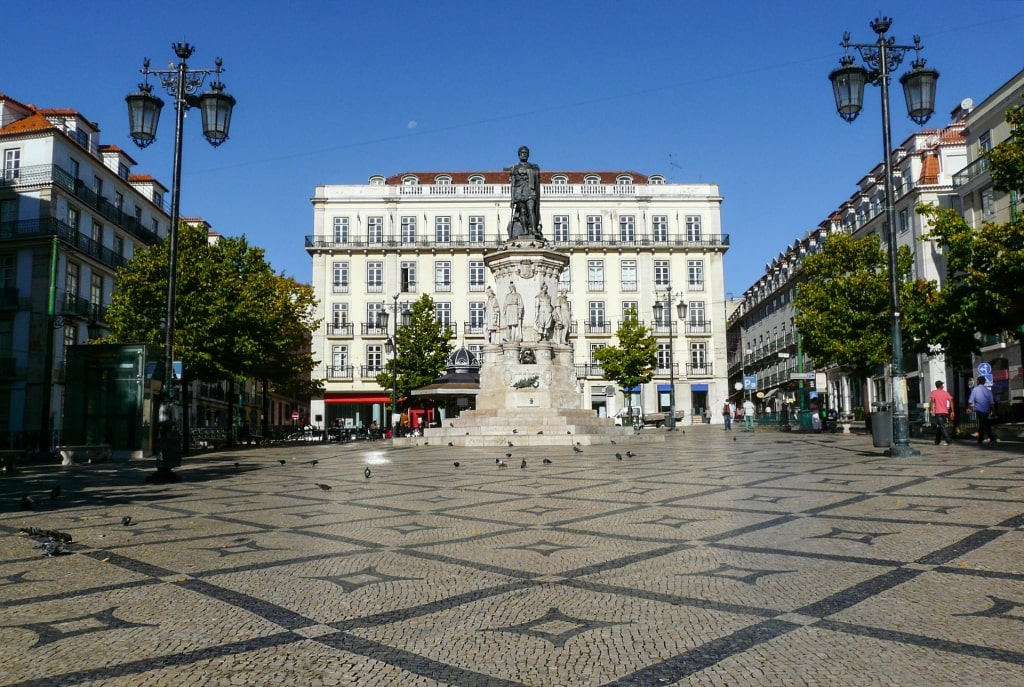
Chiado
For some retail therapy, set your sights on the neighborhoods of Chiado and Príncipe Real, home to some of the best shopping in Lisbon. Here, independent retailers and artisans have been honing their crafts for centuries.
Livraria Bertrand, the world’s oldest continually operating bookstore, is best for page-turners. For some handmade, scented candles, step inside the wooden-paneled interior of Casa das Velas Loreto. Or squeeze into the teeny interior of long-time glove-maker Luvaria Ulisses for a perfectly snug pair.
Tour the Gulbenkian Museum
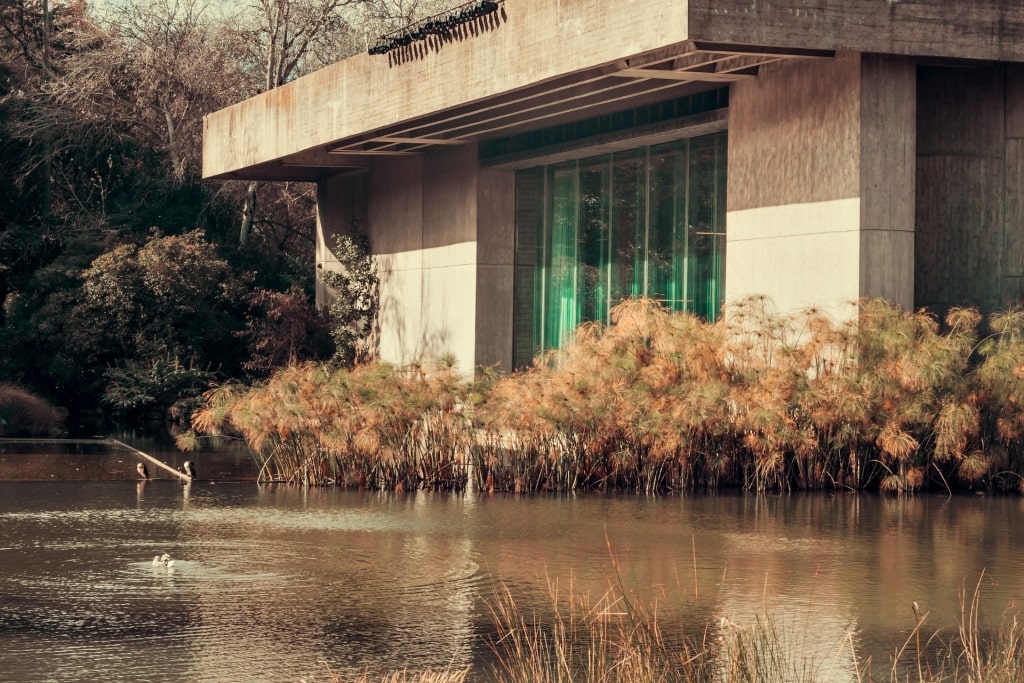
Gulbenkian Museum
Lisbon has no shortage of fantastic museums, yet the locally beloved Gulbenkian Museum is one of the most treasured-packed exhibits in the capital.
Displaying some of the 6,000-piece private collection of the late Calouste Gulbenkian, a British-Turkish businessman who later settled in Lisbon, a visit to this impressive museum-cum-gallery is one of the top things to do in Lisbon.
In the main exhibition, you’ll be wowed by Islamic ceramics, ancient Greek vases, and paintings by renowned European masters. Cross the Gulbenkian’s gardens to the Modern Art Museum and you’ll find a much more locally focused collection spotlighting contemporary Portuguese artists.
Admire Arco da Rua Augusta and Praça do Comércio

Praça do Comércio
Following Lisbon’s catastrophic earthquake, the city’s downtown area was quickly rebuilt in a modern grid-like pattern. This area, now known as Baixa, starkly contrasts Alfama’s jumble of streets with broad boulevards and sizable praças (squares).
Cutting through the center is Rua Augusta, a pedestrianized thoroughfare flanked by restaurants, stores, and street performers. To take it all in, walk from Praça Dom Pedro IV, often called Rossio Square, towards the Tagus River.
Arco da Rua Augusta, the towering marble entrance to Baixa, looms at the end of the street. From the viewpoint atop, you’ll be in a prime position to see the happenings of Praça do Comércio, Lisbon’s largest and most important square.
Take Time Out at Lisbon’s Food Market

Time Out Market
In 2014, Lisbon’s former Mercado da Ribeira was given a modern makeover. Once the go-to spot for fresh produce, it was reborn as a lively and atmospheric food hall, and Time Out Market is now regarded as one of the best spots to dine downtown.
Far from being a typical food court, the restaurants, bakeries, and bars operating inside the high-ceiling space are handpicked, ensuring the quality of dishes, drinks, and desserts is of a high standard.
Here, you can choose from the culinary creations of some of Portugal’s best chefs, such as Henrique Sá Pessoa or Marlene Viera. Both lead Michelin-starred kitchens elsewhere in Lisbon while keeping a presence in the market.
Better still, order a selection of petiscos (snacking plates) from various restaurants and taste all of Lisbon’s flavors at one of the communal tables.
Drink on Pink Street
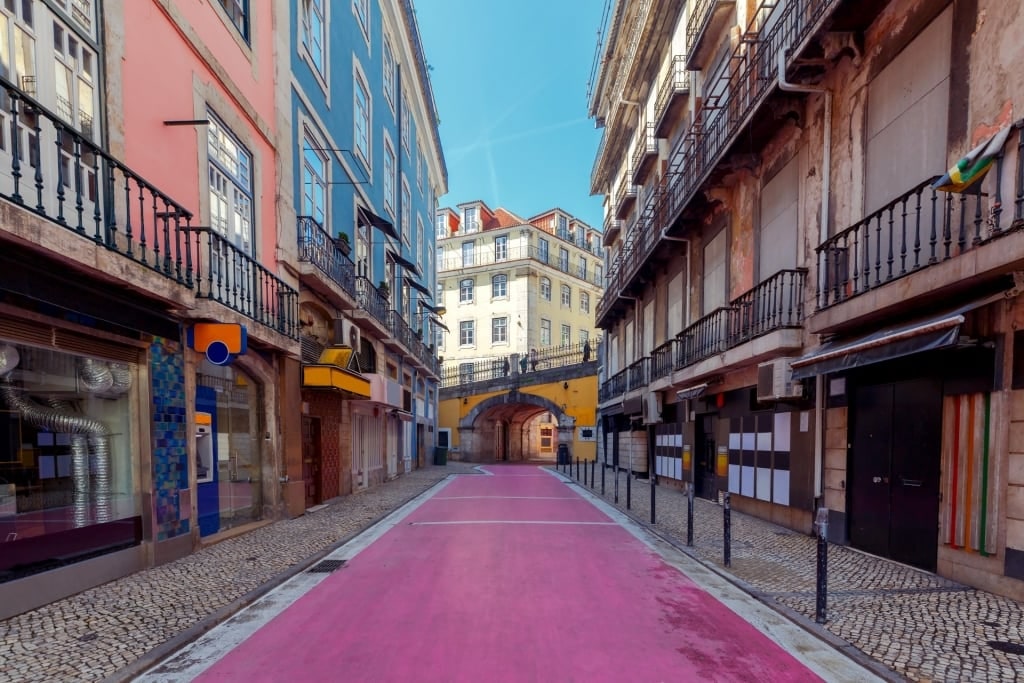
Pink Street
Behind Time Out Market, Lisbon’s Pink Street is something of a novelty. Once one of the city’s most seedy corners, the road, officially Rua Nova do Carvalho, was given a Barbie-pink lick of paint and a canopy of rainbow umbrellas in 2013, soon turning it from sordid to snappable.
Head here in the late afternoon to enjoy a Port and Tonic or a locally brewed craft beer, or come later in the evening when the music is turned up. It’s only a short walk up the hill from Pink Street to the Bairro Alto district, where small bars overflow into the animated streets into the early hours.
Sip Ginjinha
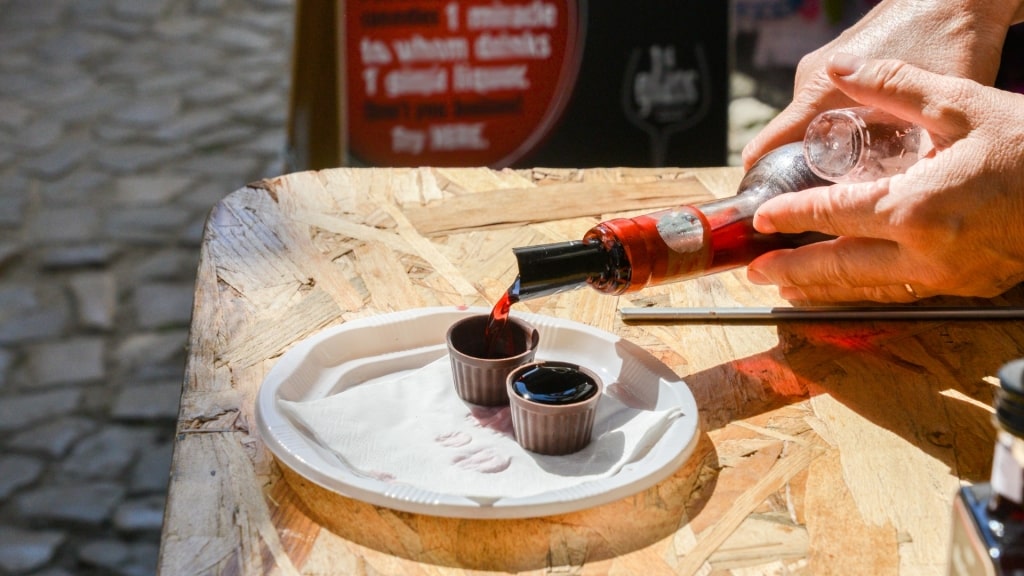
Ginjinha
Taking a sip of Ginjinha, a popular Lisbon liqueur since the 17th century, is one of Lisbon’s simplest pleasures.
The most traditional spots to try the sour Morello cherry-made liquor are the no-frills, hole-in-the-wall bars around Rossio Square, such as A Ginjinha or Ginjinha Sem Rival. Simply order a small shot, either in a glass or a chocolate cup, and enjoy sipping it on the street.
Be warned: if the booze-soaked cherry falls in your cup, it can have quite the kick.
Appreciate Calçada Portuguesa

Rossio Square
Alongside azulejos, calçada portuguesa—the small stone, patterned pavements that coat many streets—is one of Lisbon’s most recognizable art forms. Taking yourself on a stroll to discover the best of these impressive designs is one of the top things to do in Lisbon.
Some of the grandest examples are the wave-like arrangement of Rossio Square and the intricate maritime patterns of Praça Luís de Camões.
Yet this art form can also be equally impressive at a smaller scale. The superb depiction of fado singer Amália Rodrigues in Alfama or the more modern portrayals of sea creatures around Parque das Nações are just two easy-to-overlook examples.
Explore Lisbon’s Contemporary Quarter
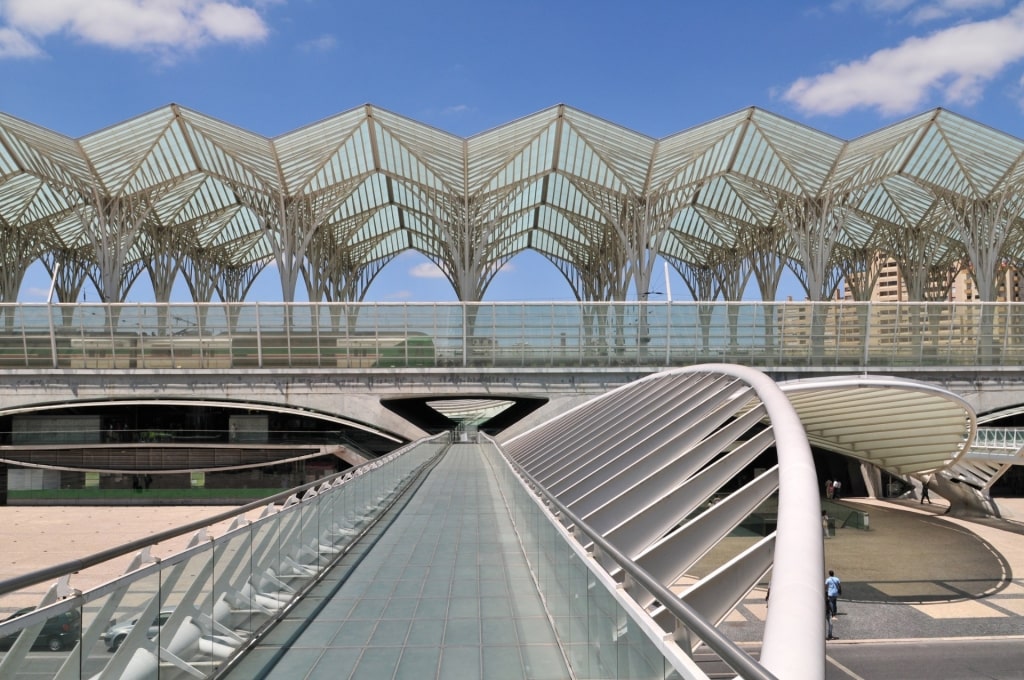
Oriente Train Station
Redeveloped for the city’s 1998 Expo, the Parque das Nações, or Park of Nations, is the most contemporary neighborhood in Lisbon.
Set in Lisbon’s east, the regenerated district is home to a cluster of galleries, event venues, and contemporary architecture, such as the striking Oriente Train Station.

Oceanário de Lisboa
Thanks to the highly educational Science Centre and the Oceanário de Lisboa, one of Europe’s largest aquariums, it’s also a great destination for children and big kids.
Watch the Sunset Riverside

Praça do Comércio
One of the most magical things to do in Lisbon is to follow the locals’ lead and settle along the Tagus River at sunset. This is even better if it’s with a glass of Vinho Verde, Portugal’s lightly sparkling greeny-white wine.
In Lisbon proper, the best places to find a sunset seat are around Praça do Comércio, either at the terrace bar of the Terreiro do Paço ferry terminal or on a deck chair at the Quiosque Ribeira das Naus.
For a different perspective that will allow you to admire Lisbon fully, hop on the short 15-minute ferry ride to Cacilhas. It’s an excellent setting to watch the final rays of the day glint off Lisbon’s cityscape while enjoying petiscos and wine at one of the riverside restaurants.
Ascend Cristo Rei

Cristo Rei
Another reason to cross the river to Almada is to get a closer look at the hulking Cristo Rei statue, inspired by Rio de Janeiro’s Christ the Redeemer.
An elevator will transport you to a breezy viewing platform 250 feet above, from which the imposing 90-foot Cristo Rei looms higher still. In the statue’s shadow, far-reaching panoramas across Lisbon’s seven hills and the westerly beaches spill out before you.
Sun at the Beach
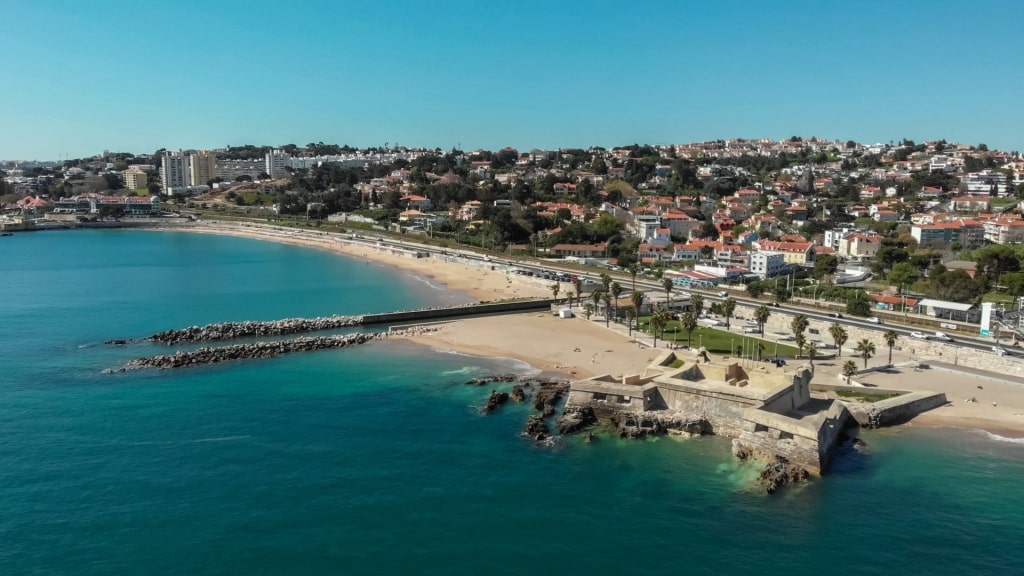
Praia de Caxias
Slipping away to the beach is one of the best things to do in Lisbon year-round, especially given the abundance of sensational shorelines nearby.
Take the train towards Cascais and you’ll soon have your pick of sandy bays, such as Praia de Caxias in Oeiras or Praia das Moitas. Venture further, and you’ll reach wilder sands like surf-friendly Praia do Guincho or the dramatic, hard-to-access Praia da Ursa.
However, crossing the Tagus River is advisable to reach the best beaches near Lisbon. Costa da Caparica, with its lively beach clubs, is the closest and perfect for a sun-kissed, lazy day.

Praia de Galápos, Arrábida National Park
But it’s the Arrábida National Park, accessed via Setúbal, a 45-minute train ride from Lisbon, where you’ll find some of the best beaches in Portugal. Lay your towel on Praia de Galápos, a bay of honey sands, gin-clear waters and backed by low-slung hills, and you’ll feel like you’ve been ferried to the Caribbean.
Relax in Leafy Lisbon
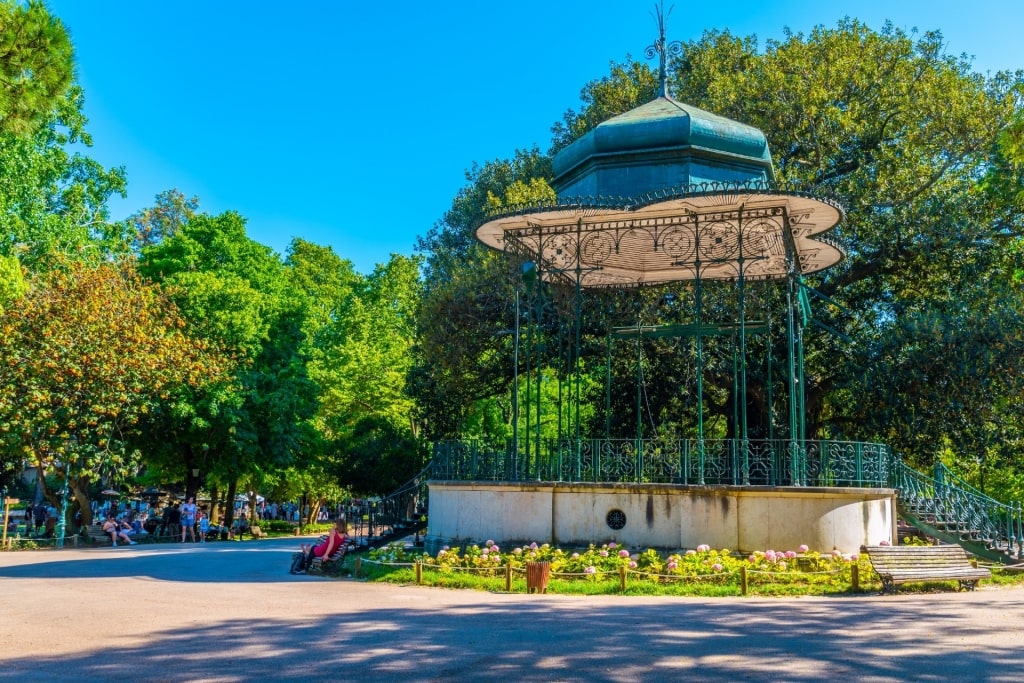
Jardim Da Estrela Park
Not content with just being a dashingly handsome coastal city, Lisbon is also surprisingly green. Botanical gardens, extensive parks, and even a 2,500-acre forest can be found within the city’s limits.
Some of the best green spaces to relax are the University Botanical Gardens, which provide a central green lung in Principe Real, and the peacock-frequented parks in Jardim Da Estrela Park or Park Necessidades. Quiosques, Lisbon’s signature outside café spaces, are prevalent in most parks, making them ideal places to pause for a shaded drink.
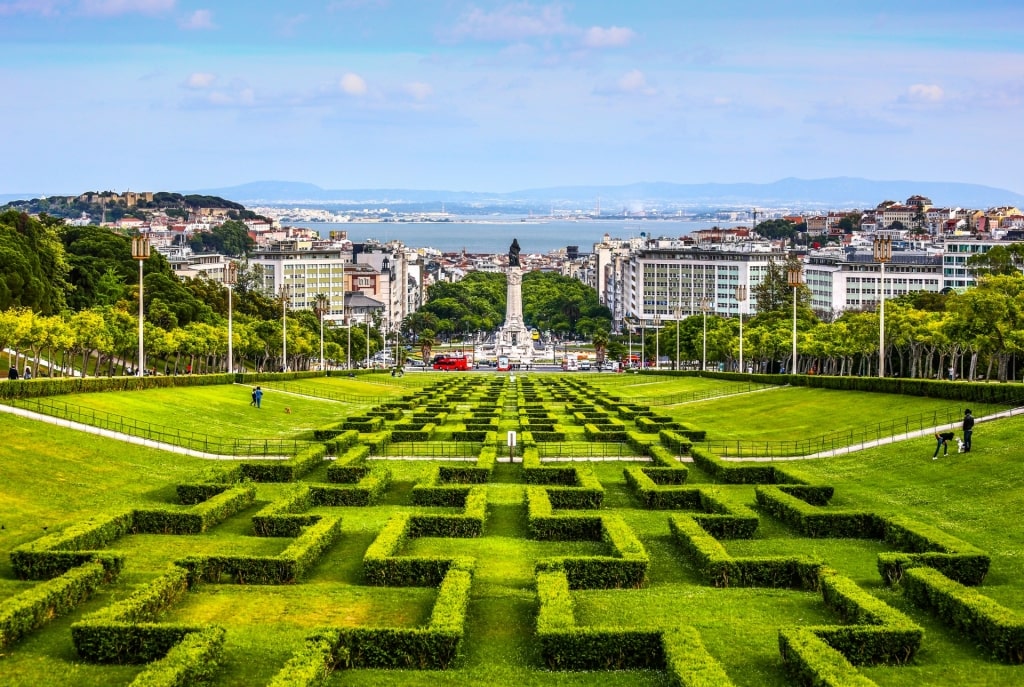
Parque Eduardo VII
Even without trying, you’ll probably stumble upon leafy spaces. Parque Eduardo VII, a narrow, city-defining space of shaped hedges, or the spacious gardens fronting Jerónimos Monastery are ideal spots to linger between sightseeing without taking a detour.
Slip Away to Sintra’s Palaces
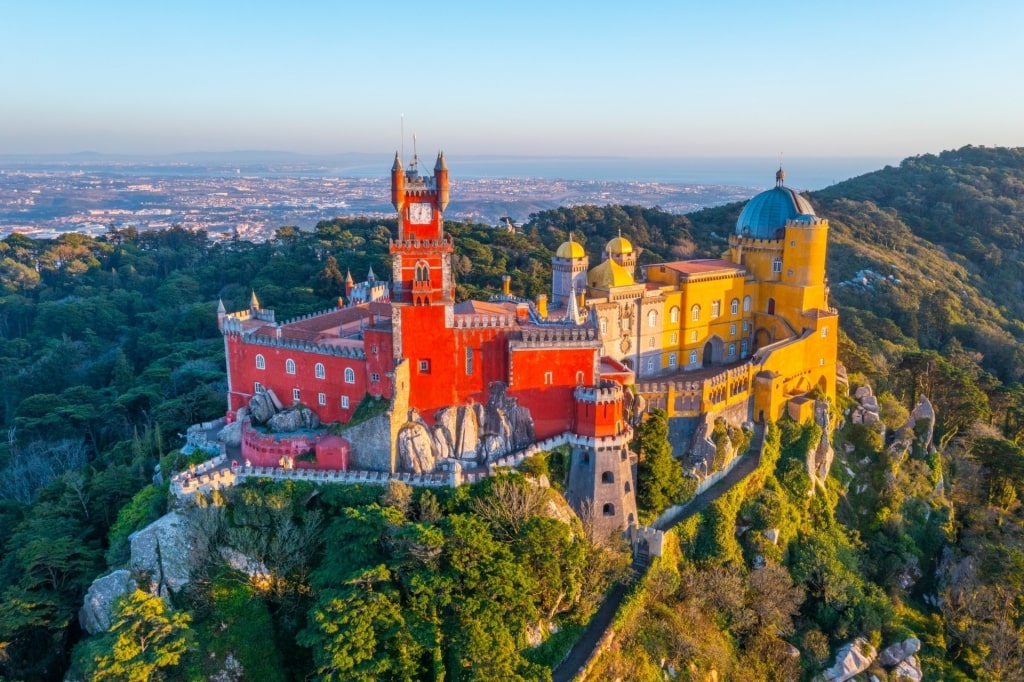
Pena Palace, Sintra
If you have at least three days in Lisbon, you can take a day trip to Sintra, Europe’s first center of Romantic Architecture and an easy train ride away. Sintra is a decadent clutch of opulent palaces, summer retreats and elegant homes spread across a forested mountain range.
The standout is the fairytale-like Pena Palace, a whimsical hilltop wonder of colorful turrets, crenelated defenses, and azulejo-adorned walls.
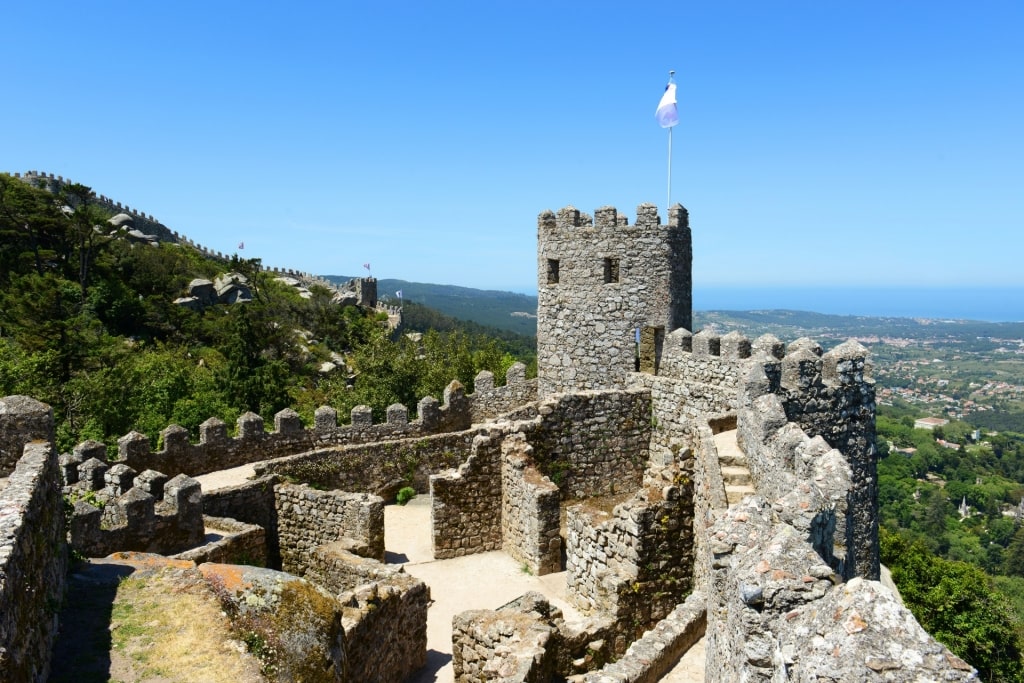
Castelo dos Mouros, Sintra
Yet there are plenty more palaces with less footfall, such as the sturdy walls of the otherwise ruined Castelo dos Mouros and the lesser-visited, recently-renovated Palacio Biester.
While it’s impossible to see all of Sintra’s fanciful facades in one visit, combining one of the palaces with one of the nearby pretty villages, such as white-washed, cliff-hugging Azenhas do Mar, makes for an excellent day trip from Lisbon.
Read: Best Things to Do in Sintra
Catch the Train to Cascais
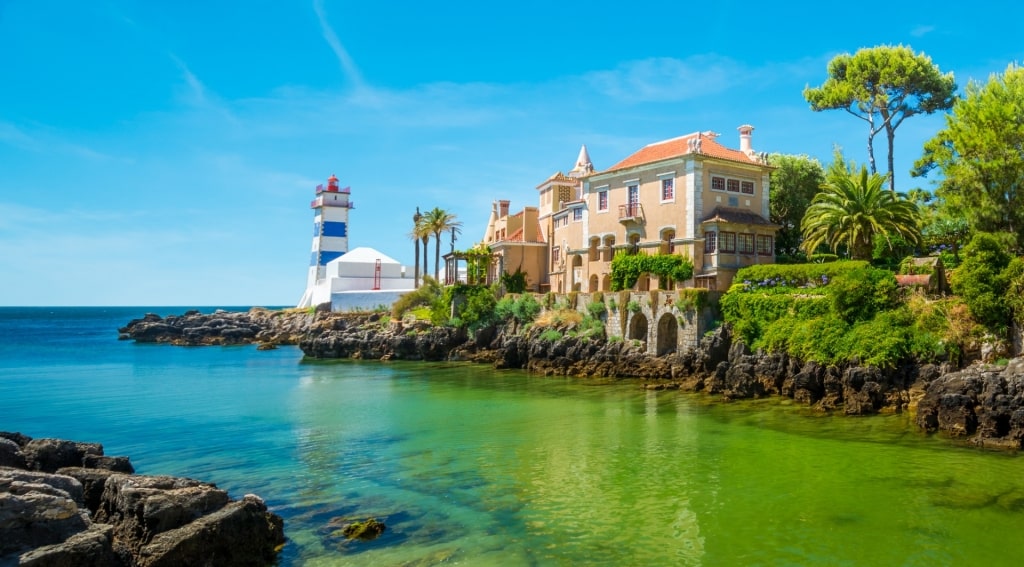
Cascais
Just 40 minutes from the capital by train, the fishing village turned coastal resort of Cascais is one of the best day trips from Lisbon. Long a popular seaside retreat with Europe’s affluent and aristocracy, the town is now an inviting mix of fetching streets, first-class seafood restaurants, and pocket-sized beaches.
Alongside being one of the best beach towns in Portugal, there are a handful of attractions to entertain. Step inside the pyramid-like Casa Das Historias for an art-filled afternoon, housing a collection of Paula Rego’s thought-provoking pieces. Or tour the Museu Condes de Castro Guimarães, set inside a stately, former summer residence.
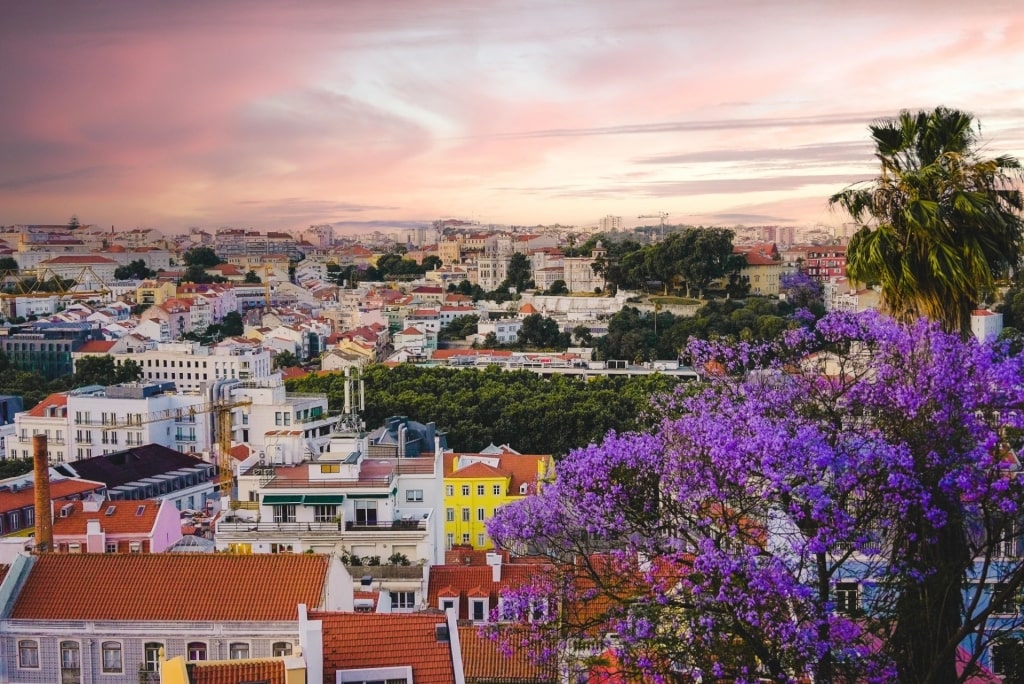
Lisbon
Ready to experience everything Portugal’s capital city has to offer? Browse Celebrity’s Lisbon cruises to plan your perfect European vacation.
